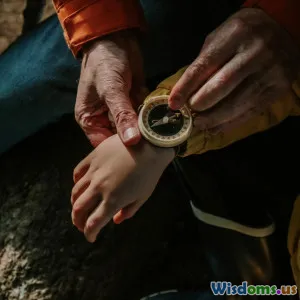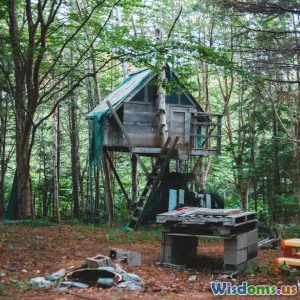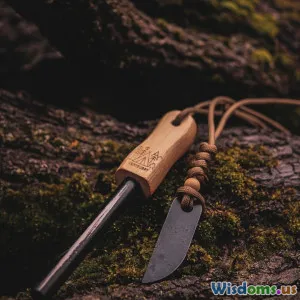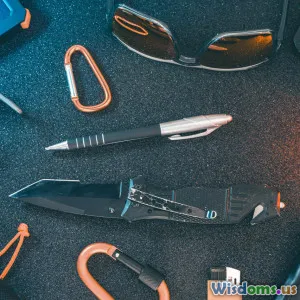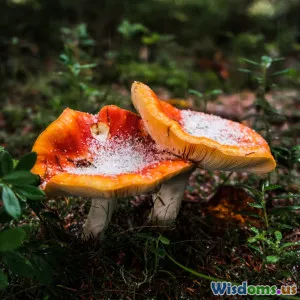
How to Find Edible Plants in the Wild Without Mistaking the Dangerous Ones
8 min read Master the essential skills to identify edible wild plants safely and avoid toxic lookalikes on your outdoor adventures. (0 Reviews)
How to Find Edible Plants in the Wild Without Mistaking the Dangerous Ones
Venturing into the great outdoors offers an exhilarating sense of freedom and connection with nature. But what happens when hunger strikes and you need to rely on nature’s bounty? Identifying edible plants in the wild is a vital survival skill — but the stakes are high. Confusing a nourishing plant for a toxic one could have deadly consequences.
In this comprehensive guide, you will learn practical strategies to forage confidently, avoid dangerous lookalikes, and transform the wilderness into a natural pantry. Let’s dive into the world of wild edibles with respect, knowledge, and a healthy dose of caution.
The Importance of Knowing Your Wild Edibles
Humans have relied on wild plants for millennia. Edible plants offer essential nutrients such as vitamins, minerals, and fibre, which can keep you alive and energized during extended wilderness adventures. However, many toxic species mimic edible ones, and some plants contain toxins concentrated in specific parts or at certain growth stages.
According to a study published in the Journal of Emergency Medicine (2015), foraging accidents contribute substantially to plant poisoning cases globally, reinforcing the need for accurate plant identification and cautious consumption.
Section 1: Equip Yourself with Foundational Knowledge
Research Local Flora Beforehand
Preparation is your strongest defense. Familiarize yourself with the edible plants and their toxic counterparts native to the region you will explore.
- Use field guides with detailed pictures, descriptions, and seasonal changes. Books like "Edible Wild Plants: Wild Foods from Dirt to Plate" by John Kallas offer excellent comprehensive guides.
- Use apps like Seek by iNaturalist which help identify plants in real-time with your smartphone camera.
- Attend local workshops or join foraging groups to learn hands-on identification techniques.
Understand Plant Identification Basics
Key characteristics help differentiate plants:
- Leaves: shape, arrangement, texture
- Stem: color, structure, presence of hairs or thorns
- Flowers and Seeds: color, size, shape, blooming season
- Smell and Texture: some plants have distinctive scents or sticky/external coatings
Example: The edible wild carrot (Daucus carota) looks similar to the highly toxic water hemlock (Cicuta spp.). However, wild carrot leaves have a pleasant carrot-like smell when crushed, whereas water hemlock has a foul odor.
Learn the Universal Edibility Test (UET)
As a last resort, UET can help test unknown plants for edibility—but it takes at least 24 hours and still involves risk.
It involves:
- Smelling the plant for strong or unpleasant odors
- Contact test on skin for redness
- Touching lips and tongue
- Eating a small sample and waiting for any reaction
This should never replace proper identification.
Section 2: Key Edible Plant Families and Their Toxic Mimics
Understanding botanical families allows quicker recognition and caution.
1. The Apiaceae Family (Carrot Family)
Includes carrots, parsnips, and parsley relatives.
- Edible: Wild carrot, fennel, parsley
- Dangerous lookalikes: Poison hemlock (Conium maculatum) and water hemlock, highly toxic and sometimes indistinguishable to the untrained eye.
Identification tips: Poison hemlock has purple blotches on stems and a musty odor.
2. The Oak Family (Fagaceae)
Contains acorns and chestnuts.
- Edible acorns require leaching tannins, but some parts of oak trees can cause digestive upset if consumed raw or in large amounts.
3. The Nightshade Family (Solanaceae)
- Contains edible plants like tomatoes and peppers but also deadly nightshade, which is extremely toxic.
Never rely on berries unless confirmed fully edible with bright, familiar characteristics.
Section 3: Practical Tips for Safe Foraging
Avoid Unknown Plants
When in doubt, leave it out. Do not consume unless you can positively identify the plant.
Observe Wildlife But Don’t Imitate Blindly
Animals can eat some plants humans cannot, and vice versa. For example, some birds eat berries poisonous to humans.
Harvest Responsibly
- Take only what you need.
- Use sustainable picking methods to preserve the plant population.
Use Multiple Identification Methods
Cross-check plants via leaf shape, flower structure, and location. Only eat when several confirming factors match.
Prepare Plants Properly
Some wild plants are edible only after cooking or special preparation.
- Example: Pokeweed young shoots become edible after boiling thoroughly several times, removing toxins.
Section 4: Real-World Foraging Examples
The Broadleaf Plantain (Plantago major)
Common and easy to identify, with wide leaves and visible veins. The young leaves can be eaten raw or cooked, packed with vitamin C.
Stinging Nettle (Urtica dioica)
Its sting is famous, but young nettles are edible and nutritious when cooked or dried.
Identifying and Avoiding Deadly Nightshade (Atropa belladonna)
Berries resemble cherries but are shiny black and highly toxic. Never confuse with edible berries such as elderberries.
Section 5: Learning from Experts and Field Ethical Guidelines
Quotes from Foraging Experts
Popular forager Samuel Thayer said, "The goal is not just to identify plants but to gain a relationship with the land and its cycles."
Ethical Guidelines
- Avoid overharvesting sensitive species.
- Respect private property and wildlife regulations.
Conclusion: Safely Embrace Nature’s Bounty
Wild plant foraging offers a rewarding way to enrich survival skills and deepen outdoor adventures. However, the margin between nourishment and danger is razor-thin. By investing time in learning regional flora, practicing rigorous identification methods, and respecting nature’s limits, you will transform uncertainty into confident discovery. Remember, cautious curiosity is your best companion; nature rewards those who respect it with knowledge and sustenance.
Happy foraging - and stay safe!
References:
- John Kallas, Edible Wild Plants: Wild Foods from Dirt to Plate, 2017
- B E J Mishara et al., "Plant poisoning: clinical and epidemiologic factors," Journal of Emergency Medicine, 2015
- Samuel Thayer, The Forager’s Harvest, 2012
Disclaimer: Always consult local experts and authorities before consuming wild plants.
Rate the Post
User Reviews
Popular Posts











